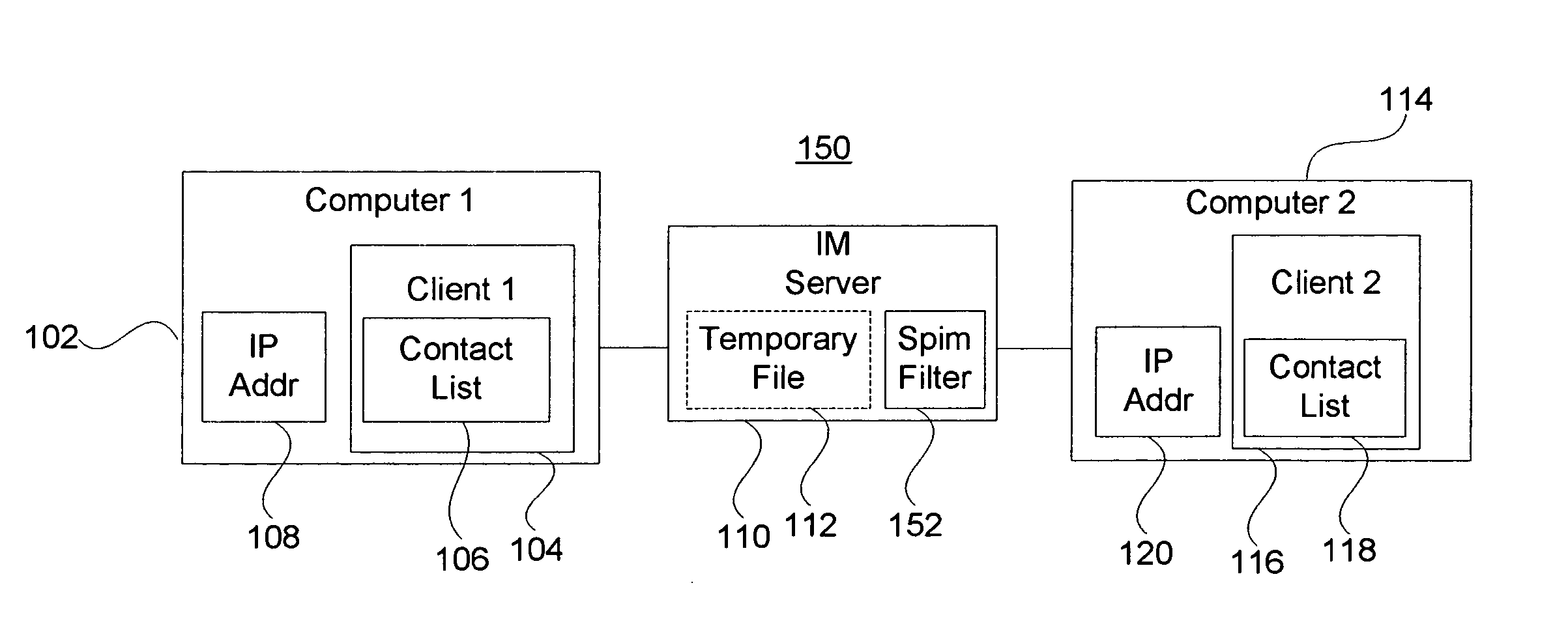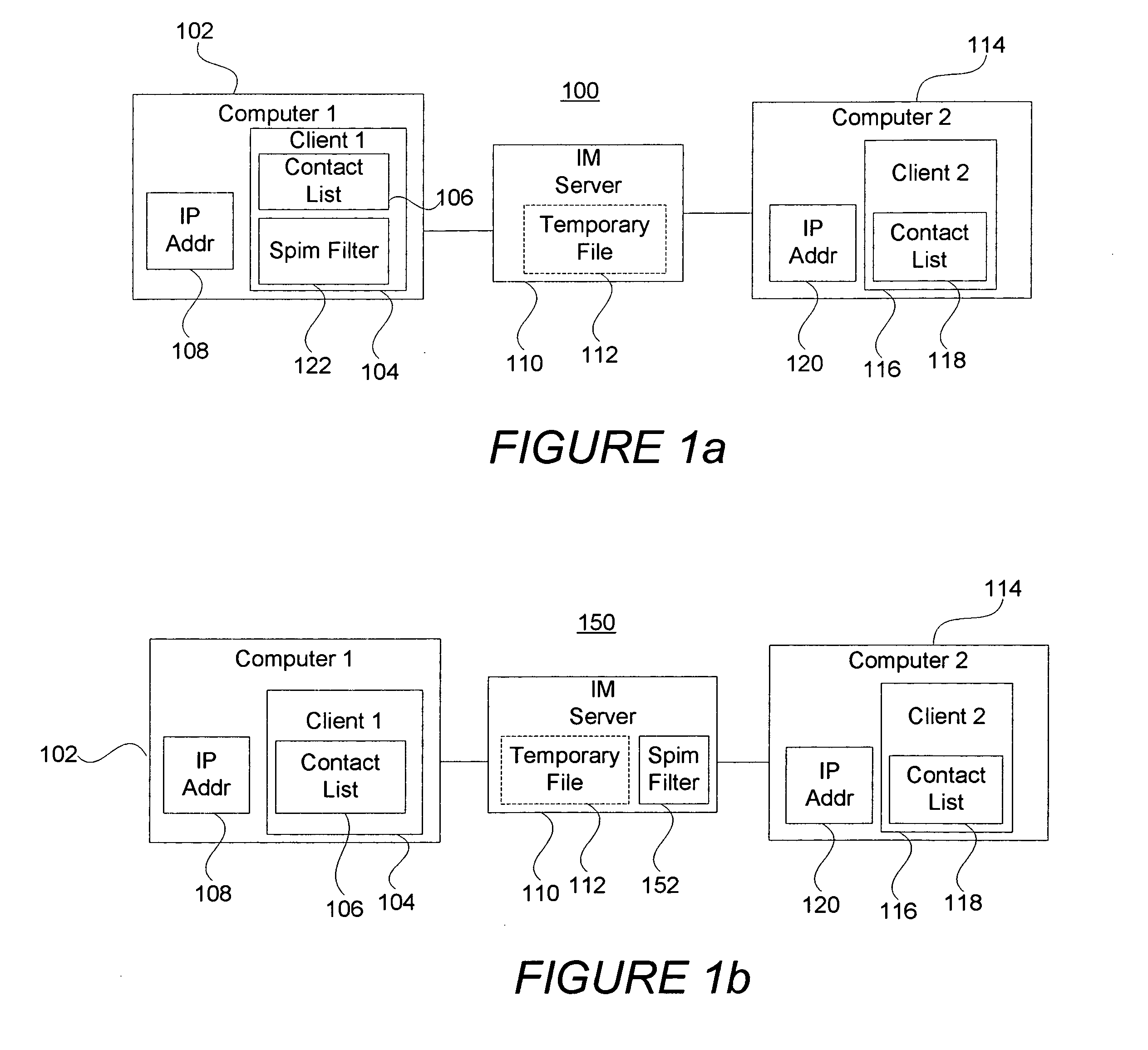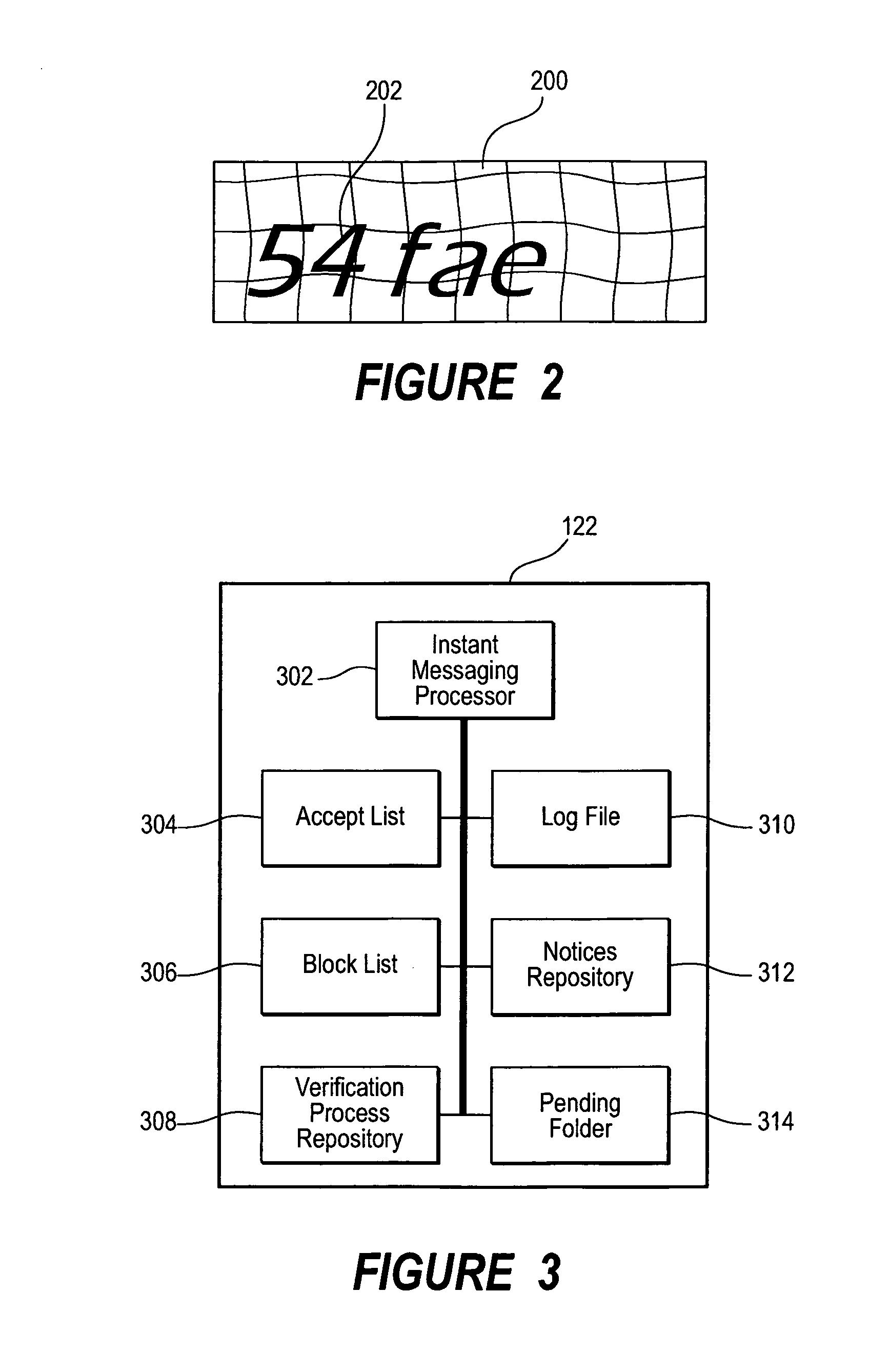Filter for instant messaging
a filter and instant messaging technology, applied in the field of instant messaging reception, can solve the problems of no way to filter junk mail sent through instant messaging, users of e-mail systems spending an increasing amount of time separating regular e-mail messages, and e-mail users also being the target of unwanted messages
- Summary
- Abstract
- Description
- Claims
- Application Information
AI Technical Summary
Benefits of technology
Problems solved by technology
Method used
Image
Examples
Embodiment Construction
[0031] The present invention extends to filtering systems for instant messaging systems. The embodiments of the present invention may comprise a special purpose or general-purpose computer including various computer hardware, as discussed in greater detail below.
[0032] The present invention provides for methods and systems for reducing or eliminating the number of unwanted instant messages that are delivered to an instant messaging user. As noted above, junk mail that is delivered via instant messaging is commonly referred to as “spim” (IM Spam). The term “spim” will be used herein to refer to any kind of unwanted instant messages, whether transmitted by an individual, company, machine, or any other instant messaging transmitting means. The term “spim” will include commercial and non-commercial instant messages. A spim message may be one that is delivered to a single individual user, or may be a mass message sent to a large number of instant messaging addresses.
[0033] Instant mess...
PUM
 Login to View More
Login to View More Abstract
Description
Claims
Application Information
 Login to View More
Login to View More - R&D
- Intellectual Property
- Life Sciences
- Materials
- Tech Scout
- Unparalleled Data Quality
- Higher Quality Content
- 60% Fewer Hallucinations
Browse by: Latest US Patents, China's latest patents, Technical Efficacy Thesaurus, Application Domain, Technology Topic, Popular Technical Reports.
© 2025 PatSnap. All rights reserved.Legal|Privacy policy|Modern Slavery Act Transparency Statement|Sitemap|About US| Contact US: help@patsnap.com



